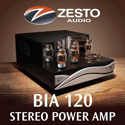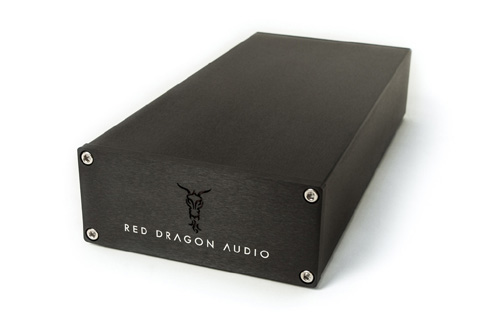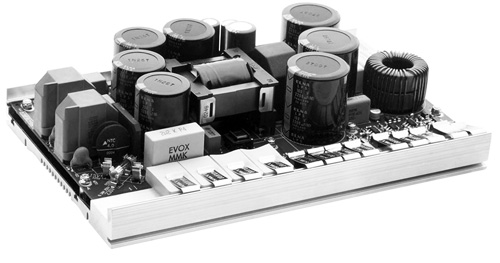|
|
You are reading the older HTML site
Positive
Feedback ISSUE 74
red dragon audio M500 and M1000 MkII Amplifiers as reviewed by Jim Merod
Here We Go Again Over many years I've endured hope and disappointment in the service of auditioning and evaluating loud speakers of virtually every sort. At a certain point one becomes braced for the worst or, at least, for the next version of "no cigar" in the process of countervailing but ongoing optimism once again. I've confessed to professional friends that, while it is the case that only one brand of microphone has ever failed to earn my respect to some degree, loudspeakers by and large are a drag. It may be that some of my audiophile pals and fellow reviewers find that outlook harsh. Or unfair. Or any number of things that, in the end, resemble curmudgeonly disdain. Who am I to disagree, since that may be true? But a guy knows what he likes and what he is able to suffer or indulge. So I'm stuck with a high threshold of need when it comes to finding loudspeakers that truly make me smile. A few so called "top of the line" speakers that have emerged to the head of list in recent years just flat out leave me stunned with incomprehension. My buddy, Joker Redneck, took me not long ago to audition these "magic" transducers and we sat obediently front and center, listening to several hundred thousand dollars worth of audio gear pump their expensive glory into the targeted speakers... and, minute by minute, bam! Nothing happened of any useful kind for me. No genuine signal transparency. No audio nirvana. No musical seduction. I sat and heard one track after another as we ran through opera, pop, jazz and finally the opening of Mozart's Jupiter symphony. Whatever these expensive boxes were supposed to be accomplishing just didn't happen for my hungry ears. Now let's be real a moment. I certainly heard a set of devices that had a number of sonic elements that portended elegance and class... but a set of musical virtues lost within an overall sonic presentation that obscures the depth of sound-staging and/or the dynamic heft and slam of full range symphonic voicing and/or a singer's timbral complexity (and on and on in its lack of harmonic detail and ambient texture) is a zero. In this instance these supposedly most "magical" of speakers were an impressive zero—high priced instruments that captured part of the musical performance with distinction even as they allowed the recorded truth and emotional loveliness of great music to disappear. Turning Toward Good Luck My experience with amplifiers has been somewhat better than the doldrums above, but I'll admit without reserve that amplifiers seem to be an odd species of musical necessity. Why? For the simple reason that one person's amplifier ecstasy is another's audio vacuum cleaner. More than twenty years ago I was in the mood to upgrade my amplifier life, so I headed to a local audio emporium that sported a rather high-octane salesman. I entered his terrain and he dutifully pounced. A brief polite exchange indicating my desire to nose about on my own was accepted only, soon, to be violated by his huckster rap. The culmination of our differences sent me away with a stereo amp that he promised would make my difficult to drive Dalquist speakers "sing like Pavarotti" (or some such palaver). They didn't, of course, and on return he feigned crest-fallen incomprehension of my error. On one side, the delight of a week's home audition was a boon while, on the other side, the melodrama of the effort was a pain. If I could summarize my education from that feckless moment forward I would, but the autodidactic rigor of audiophile reality demands to a volume or two of Boswell's journals. Enter the Dragons Like a butterfly caught in the rain, an audio hound seeking musical karma must take cover in dry, well-endowed spaces. For me the journey from hopeless shills and false leads to fulfilled sonic engagement swerved through tortured paths of heavy loads in and out. Most "promising" amps are leaden behemoths. Trust your back for the sake of the search. Or get lucky—since plain old good luck seems, quite often, to play a large part in the creation of a superior sound system. Aside from my longstanding, never to be dismissed, earnestly brilliant and just plain magnificent McCormack amplifiers (the DNA 0.5 and the DNA 125 platinum editions), no amps have entered my musical cosmos with the delicate kick-ass power and sonic loveliness of Ryan Tew's "Red Dragon" amplifiers.
I've lived for quite a stretch with his class D mono-block M500mkII digital amps (at 500w/4 ohms) and with the powerhouse M1000mkII version (at 1100w/4 ohms) and will not let these giant killers leave my crusty grasp. The Red Dragons are immensely efficient and incur a blissfully low footprint on your electrical bill. Technical details aside, the bottom line reality of these over-achieving and modestly priced musical work horses is their ability to drive tough speaker loads like the stubborn Magnepan 3.6s and Apogee Stage speakers which approach a 2 ohm resistance. For me, the effortless quality of their interactions with each speaker I've harnessed them to is both impressive and a clearly significant element in their musical surprise.
I should note here that, as we know, all amplifiers have a sonic character. I've been amused over time by amps that claimed to be "absolutely neutral" or "virtually invisible sonically" (whatever that mixed reference intends). I'm not at all certain what a genuinely "transparent" amplifier would sound like, since that term, which we often employ to designate an absence of sonic coloration merges an ocular description with a sonic reality. In one form, I think we're all stumped a good deal of the time when we try to accurately portray what we hear and how that occurs. In sum, it's not only extremely difficult to talk about music adequately, but it's no less hard to describe sound (especially musical sound) accurately. Thus, at the risk of skidding down fractious verbal paths, I'll indulge a moment's inevitable rhetorical ambiguity to suggest (mixing the virtues of sight with the indeterminacies of sound) that—strange as this may seem—I've found the intrinsic "quality" of the Red Dragon's musical character to be like sunlight washing across a sonic vista. What I'm attempting to delineate metaphorically is an experience of hearing recorded sound and music that, in its complicated braid of dynamic layers and harmonic textures and lyrical striations, reveals itself with natural light and shade and color but without glare, loss or diminishment and over-emphasis, I'm aware of the awkwardness involved here. What I mean to depict is tricky to articulate but resembles the innate complexity of the Greek word ekstasis, to stand out, to emerge and to appear vividly with three-dimensional solidity. If the stretch of my analogy has any bite, I'd like to believe that it points usefully toward a quality in sight and sound which is inherently physical, like touch, and meaningful like feeling. Whatever else I might note about the surprising "rightness" of these Red Dragon amplifiers (and both versions own a profound sonic kinship) it gains little from technical terms and detailed measurements and everything from concretely salient features of these extremely "musical" audio partners: that the work they do in a well-assembled sound system has no trace at all of being "work" or effort... that music driven by these wonderful boxes seems to "emerge" as if a genie gave permission for musical sunlight and sonic magic to do their innocent, playful thing—the creation of fun, beauty, and emotional engagement. Did I mention above how much speakers have been the bane of too many days and nights for me? Amplifiers almost always are received with the promise of angelic purity only to betray a smudged reality or the strain of sonic constipation. If that exaggerates the worst in amp deception, it is not so much a blanket generalization as a subtle truth about amplification foibles of nearly countless varieties. My immense appreciation for both pairs of Red Dragon amps approaches veneration. Against many stereo and mono-block amps costing enormously more, these honest and brutally strong yet delicate music-making units have earned an old guy's respect and love. They are just right—amazingly, improbably, astoundingly—whether the graceful grandeur of Acoustic Zen's Crescendo speakers with their easy to drive happiness is in tow, or the beguiling but cranky Maggie 3.6s are under their control. In a commercial world where too many glitzy audio products are hyper-designed cosmetically to suck big spenders into thrall, not for the outcome of sonic accuracy or musical glory, I nominate Red Dragon amplifiers as that most elusive but extraordinary audiophile gift: world class amps at bargain prices. They've made my sonic universe more hilarious with joy and beauty. I'll stack them against a long list of big buck amps that cannot equal their self-confident musical virtues. Jim Merod
M1000MkII
M500MkII
Free Shipping
Red Dragon Audio
|











